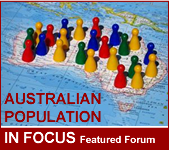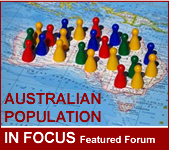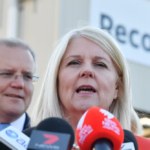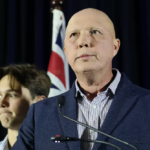Getting smart about energy infrastructure

James Bangay, General Manager – ROAMES, at Ergon Energy, delivered the following opening address at Global Access Partners’ National Economic Review 2011: Australia’s Annual Growth Summit on Friday 16 September.
I’m not quite sure if bringing an engineer in to a forum with demographics and economists is a lamb to the slaughter or the opportunity for you to get some sleep.
Australia faces some significant challenges from population growth when it comes to infrastructure management. It’s not just population growth. It’s the betterments in the existing population as well. When we talk about betterment in the energy sense, we’re really talking about people consuming more energy through the devices they are adding to their homes to increase their lifestyle aspirations.
One thing is for certain – as we look into the future, we cannot deliver energy in the way that we have done in the past and make it sustainable. So we need to find new ways of doing things. I’ll talk about Ergon as an illustration of this. Ergon covers 1.7 million square kilometres of territory. The population is spread throughout that territory in 600 regional communities that Ergon supplies to. There’s 700,000 customers spread across that territory and 150,000 kilometres of circuit. That means, if you would take the individual wires and put them end-to-end, they’d go around the surface of the earth 12 times. Every one of those wires likes to attract lightening, likes to attract wind, likes to attract trees and obviously that’s a considerable cost.
 Energy companies in general like to boast about their statistics. They like to be the biggest in something and they like to be the smallest in other things. Unfortunately for Ergon, we have the largest pole to customer ratio in the world. So we’ve got more power poles supporting fewer customers than anyone else. Our problem is space. You feel this as a person who lives in Queensland. I drove to Charlton to visit my brother, from Brisbane. Ten hours in the car to get to a small town, 12 sets of road-works on the way. You have to wonder how does this town support this infrastructure?
Energy companies in general like to boast about their statistics. They like to be the biggest in something and they like to be the smallest in other things. Unfortunately for Ergon, we have the largest pole to customer ratio in the world. So we’ve got more power poles supporting fewer customers than anyone else. Our problem is space. You feel this as a person who lives in Queensland. I drove to Charlton to visit my brother, from Brisbane. Ten hours in the car to get to a small town, 12 sets of road-works on the way. You have to wonder how does this town support this infrastructure?
In Ergon’s case, for example, we spend $100 million a year cutting trees away from powerlines. Now when we drive to a rural property, if there’s parthenium weed infestation, we could have driven two hours to a property to do an inspection. If there are weeds, we have to drive back to a wash-down facility before we can drive to the next property. All of these things introduce great costs into energy provision.
When we talk about growth, we can think of a small community that might be 400 kilometres away from the nearest generation point. That small community is gradually increasing air-conditioning use through people improving their lifestyles and, for a few hours of the year, we get to the point where that 400 kilometres of power-line can no longer supply the energy. That’s $40 million of expense to allow air-conditioners to run for a few hours of the year. There has to be different ways of delivering and meeting the energy solutions.
On top of the geographic problem, we have some changing customer requirements. The understanding of what we do with energy is different. It used to be keep the lights on, run the cool room. Now we can blame Darren Lockyer [former Rugby League footballer] for some of the problems that we have. Victorians won’t get this at all. But in Queensland, we suffer from the synchronisation of lifestyles – that’s where there is an event on TV that would cause everybody to turn their television on at the same time.
TVs don’t actually consume that much energy. But you might have seen a program last year on TV, called Britain From Above, where in the national control room for energy they have a small TV in the corner and they watch EastEnders every day to determine when the first ads comes on. Because at that moment, everybody goes and turns on their electric jug and because the power that is driven through the system is more than UK can supply, they have to import extra electricity from Europe.
The peaks of demand are driving up investment in energy. The other thing that’s driving up investment in energy infrastructure is the fact that we depend on it more for our lifestyles, more and more of what we do is energy dependent. You feel that when you have an hour without power at night you ask yourself what do I do now?
Those two things, the peaks in the demand and the absolute availability requirement that people have are actually what drive the cost of electrical infrastructure. But it’s not reflected in how we pay. Therefore we need new ways of delivering solutions that people can understand, that people can choose and adjust for their lifestyles, instead of one price or one solution matches all.
If we think about new ways to do something, it always requires some kind of change in the environment. Other pieces of infrastructure come in to play that we can now draw on. At Ergon we’ve been exploring the question of how we can fundamentally reduce the price of energy and the cost of maintaining that infrastructure, we’re looking for new infrastructure that exists today that offers us a paradigm that we didn’t have five or 10 years ago. As we look around, we can see some of those paradigms on the internet, positioning technologies, these mapping systems, all of which are becoming far more available to us to be part of the solution of managing that infrastructure.
So if we look at what the new infrastructure could be, what do we think of as infrastructure? We tend to think of hardware, of the solid things. But is this the real infrastructure that can change our paradigms? As I look around a lot of the small businesses in Queensland, there’s been a built infrastructure that’s changed their paradigm and that’s information infrastructure. It’s Google Earth. You get on the phone to any builder and you say, I want to replace the tiles on my roof, while you’re on the phone to them, they’re on Google Earth looking at your house. They give you some assessment of the likely complications. That infrastructure is changing how we work because it’s a shared tool.
The information that can drive changes in our business is now more readily available to us. But is it precise enough for us to trust an energy delivery business on? If we get new information infrastructure on digital models of the earth, for instance, that we could trust and we could watch evolve, there are two things it will do for us. One is it will help us look for and find those new sustainable projects, very different ways of doing things, ways of doing things that you can’t pilot but you have to scenario. The other thing it will do for us is help us find a way to that future transition, because we can think of the most optimal future solution. But it actually might not be evolutionary as achievable.
One thing we need to do is distribute value through the supply chain differently. Right now we could think of the energy grid being the absolute reliable thing I need to actually get my energy. So we pour money into the energy grid but we leave the household untouched. In fact, perhaps that should be reversed. What can we do to a household to make it more resilient and free from connection to the ageing grid?
One of those things, for instance, is energy storage. If we were to put energy storage into every house in Queensland, we could run the electricity grid as a triple-charge system, charging houses. When they turn on that electric jug, it doesn’t draw down instantaneously from the power station. It draws out of the battery. The difficulty is the transition. How do we make that evolve? For that transition to occur, we need a lot of information, trusted information, models of the electrical network, the location, buildings and so on, so that we can simulate that environment and demonstrate the case.
When we talk about these sorts of solutions coming to the fore and then options for future intelligent management of electrical networks and we think back to Peter’s [Woodgate, CEO, Cooperative Research Centre for Spatial Information (CRCSI)] opening comments about the array of technology coming to us, is that 10 years away, 15 years away, before we have that kind of real positioning asset management solution?
Our position at Ergon is no. The value case for this is imminent – this year and it’s now. So for the last few years, with the CRCSI and other research partners, both the Australian Centre for Aerospace Engineering and Queensland Department of Environment, Ergon has actually constructed two special purpose planes, designed from scratch, deliberately as infrastructure management systems that will fly over all the built infrastructure in Queensland every year and build a precise model of that world, refreshing every year, any movement of any asset.
Every conductor captures and locates in real world space accurately. Every tree of 100 million trees in the vicinity of power-lines will be modelled, in terms of its growth, every year from now forward. This program starts flying in November. So within the first 12 months, we’ll have that precise 3D model of all the infrastructure in Queensland that’s visual from the air, of which the majority of ours is.
For us that means 400 terabytes of data a year being gathered, interpreted, monitored and made available to our staff. But what do we do with the value of that information? It sits in Ergon Energy’s corporate system. In fact, it sits in a cloud because it’s too much for us to host internally. So in the cloud, in a secure environment, we have 400 terabytes of digital earth model, accurate to centimetres, about Queensland. One could argue that there’s a potential, incredible value for local governments, for state government, Main Roads, Queensland Rail, all of whose infrastructure is visible to us as well and then to the private industry as well.
What do we do with that information? How do we make it available? These are the kinds of challenges now that the Queensland Government will have to deal with considering we’re a government-owned corporation sitting on this wealth of information. But at the end of this discussion is one thing. If we can better understand the real world and better forecast growth and change, and better transfer money from energy networks to consumer choices so that they can make the value propositions that they want, we can actually run an electricity grid that’s far cheaper than any kind of electricity grid being run in the world today. It’s information dependent, and so the information becomes the infrastructure we operate our businesses on.
James Bangay is the General Manger of ROAMES at Ergon Energy. An electrical engineer with extensive experience in the operation and management of Ergon Energy’s network, James has in recent years become a champion for intelligent systems capability within the energy industry. James commenced his career with Ergon Energy’s predecessor Capelec in 1994 and since then has performed many roles including: oversight of construction and refurbishment activity, driving network reliability and performance improvements, forecasting network growth and capital development, and managing the enterprise technology strategy.













frank6th
October 25, 2011 at 6:21 am
Energy storage in every house
Dear James, I lived for ten years with a remote area power supply. The difference between a remote are power supply and the grid is similar to being on town water or tank. Only thing I found really bad was the energy storage is probably too technical for the average lay person to manage.
To consider a combine cycle battery and grid arrangement don’t forget that batteries are only around 50% efficient in most cases on average. So if we were not careful we could actually find energy consumption rise overall.
I personally favour a National or maybe International DC energy grid with prices that encourage sustainable inputs.
Yours sincerely
Frank Leister